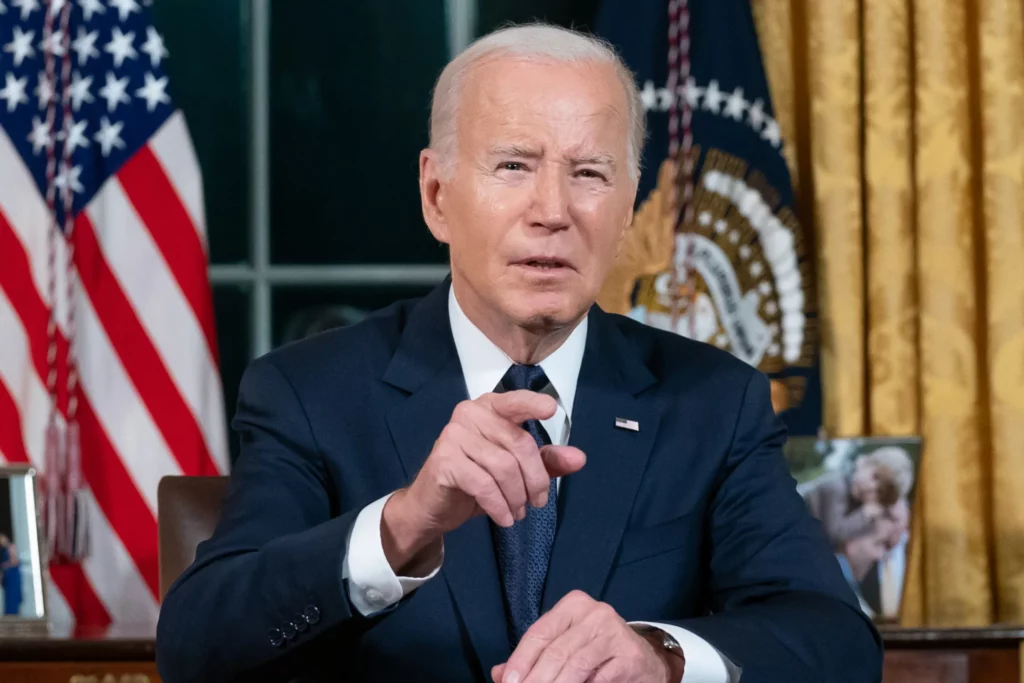
OPINION
By Karl Rove
The presidential election may be more than a year away, but Democrats are spending historically early and lavishly to sway Americans in the battlegrounds states of Arizona, Georgia, Michigan, Nevada, North Carolina, Pennsylvania and Wisconsin.
The first ad buy was a small Democratic National Committee purchase in April in six battleground states and on cable. A $2.5 million buy of Biden digital ads followed later in the month. The Priorities USA PAC began running ads in six states in late April, part of its $75 million commitment to help Joe Biden. In May, the Biden super PAC, Climate Power and Way to Win Action Fund spent more than $20 million in a joint venture emphasizing the president’s plans for green energy jobs, lower drug prices and a middle-class-centered economy.
In August, the Biden campaign began spending $25 million on ads aimed at swing voters in seven battlegrounds, including national cable spots aimed at Hispanic and black voters. Then, in early September, Biden’s super PAC announced it was joining Climate Power in a $13 million ad blitz starting this month.
Supporters say this early advertising is exploiting “an inherent advantage” of Mr. Biden as incumbent by going on the offense while GOP candidates squabble. Maybe. But this looks more like fear of weakness.
Consider how all those tens of millions in ad spending has worked out for Team Biden so far. On April 1, before the ads started, Mr. Biden’s job approval numbers in the RealClearPolitics average were 43.2% approve, 53.9% disapprove. As of Wednesday, they were 41.2% approve, 54.9% disapprove, a net 3-point decline.
The RealClearPolitics average had Mr. Biden and Donald Trump tied April 1 at 43% each. Wednesday, the ballot was Mr. Trump 44.8%, Mr. Biden 44.1%. Worse, an Aug. 31 CNN poll had Nikki Haley at 49% to Mr. Biden’s 43%. Voters are just getting to know her, and she’s already beating the president. Then last Friday a Morning Consult poll showed Mr. Biden trailing Mr. Trump in five of seven states where Democrats ran ads during August. Mr. Biden was ahead only in Nevada and tied in Michigan. Brutal.
Maybe Team Biden’s ads didn’t work because events overshadowed them. Maybe swing voters don’t pay attention to advertising until close to the election. Maybe the messages weren’t believable. Maybe they flopped because voters trust Republicans more than Democrats on the economy, national security, crime and immigration. Maybe it’s a bit of all four explanations.
Then again, my hunch is the ads failed and the poll are getting worse principally because we all see Mr. Biden’s increasing frailty. The Aug. 31 CNN survey found only 28% of respondents thought Mr. Biden “inspires confidence,” while 72% believed he didn’t. When asked if Mr. Biden “has the stamina and sharpness to serve effectively as president,” only 26% replied yes while 74% said no. That’s compared with 67% who said no in March and 51% last fall. The core reason Mr. Biden’s numbers aren’t getting better is that no amount of advertising will change public opinion about his fitness for the Oval Office. He won’t get better, only older.
What are the president’s options? One is to go thermonuclear on Mr. Trump, hoping the mother of all negative campaigns beats him. That’s dicey. The former president has held his own in polls while under four indictments. And if the GOP candidate isn’t Mr. Trump, Republicans will have a clear shot at the presidency no matter how far down in the gutter Mr. Biden goes.
Op Ed fist published in the Wall Street Journal.

Karl Rove served as Senior Advisor to President George W. Bush from 2000–2007 and Deputy Chief of Staff from 2004–2007. At the White House he oversaw the Offices of Strategic Initiatives, Political Affairs, Public Liaison, and Intergovernmental Affairs and was Deputy Chief of Staff for Policy, coordinating the White House policy-making process.
Mr. Rove has been described by respected author and columnist Michael Barone in U.S. News & World Report as “…unique…no Presidential appointee has ever had such a strong influence on politics and policy, and none is likely to do so again anytime soon.” Washington Post columnist David Broder has called Mr. Rove a master political strategist whose “game has always been long term…and he plays it with an intensity and attention to detail that few can match.” Fred Barnes, executive editor of The Weekly Standard, has called Mr. Rove “the greatest political mind of his generation and probably of any generation. He knows history, understands the moods of the public, and is a visionary on matters of public policy.”
Before Mr. Rove became known as “The Architect” of President Bush’s 2000 and 2004 campaigns, he was president of Karl Rove + Company, an Austin-based public affairs firm that worked for Republican candidates, non-partisan causes, and non-profit groups. His clients included over 75 Republican U.S. Senate, Congressional, and gubernatorial candidates in 24 states, as well as the Moderate Party of Sweden.

